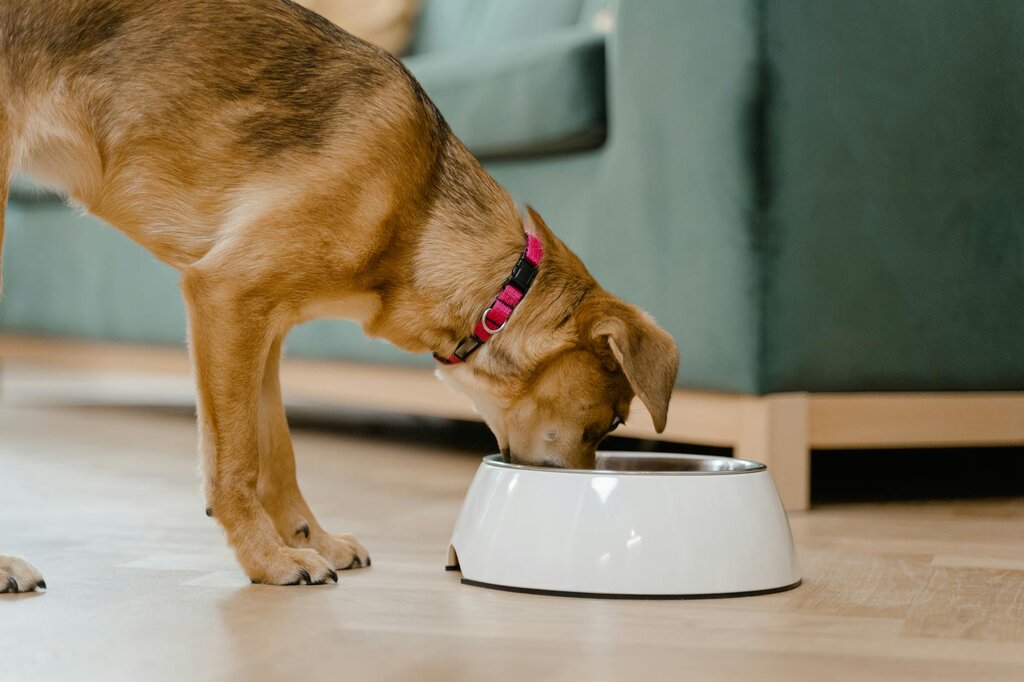Last Updated: 10/06/2025
Yeast infections in dogs
Read more from our vet team about common Yeast Infection causes and treatments
Author: Dr Teagan Lever BVSc (Hons)
Reading Time: 32 minutes - long read
Last Updated: 10/06/2025
Read more from our vet team about common Yeast Infection causes and treatments
Author: Dr Teagan Lever BVSc (Hons)
Reading Time: 32 minutes - long read
Tired of your dog's endless scratching? Yeast infections can be a major cause of skin irritation in dogs. Learn how to recognise the symptoms and find relief for your furry friend.

In dogs (and sometimes cats), the term 'yeast infection' is frequently used to describe the presence of excessive numbers of Malassezia pachydermatis, a normal inhabitant of canine skin which can overgrow in certain conditions.
Malasezzia loves warm, moist, oily conditions so therefore it comes as no surprise that the inflammation caused by allergies creates a perfect environment for it to grow. While Malassezia yeast does not invade past the superficial layes of the skin, it does release enzymes which results in itchiness and some dogs (particularly those with atopic dermatitis) can develop a hypersenstitivity to the presence of Malassezia, or a 'yeast allergy'.
Understandably some pet owners may confuse the diagnosis of a Malassezia 'yeast infection' or 'yeast allergy' with an allergy to yeast in the diet. While yeast, such as brewer's yeast, a good soure of B vitamins, minerals and amino acids, is added to some pet foods, the 'yeast' species in brewer's yeast is a completely different species and an unlikely source of food allergies. Food allergies in dogs are usually allergies to proteins in the food that the dog has eaten for some time, for instance beef or chicken.
For more on food allergies, read Could Your Dog Have a Food Allergy?

There are many factors contributing to potential yeast overgrowth. The most common contributing factor in dogs is allergies. The skin is naturally a barrier to protect the body from organisms in the environment as well as on the skin itself. Skin allergies can cause skin irritation that weakens the barrier and disruption of the normal organism balance that can allow for yeast overgrowth. Other contributing factors to yeast overgrowth can include:
Weakened immune system: A dog' immune system is crucial for controlling yeast populations, and if it is compromised or weakened due to diseases like cancer or some medications like corticosteroids, this could result in yeast overgrowth. Similarly, metabolic conditions like hypothyroidism and Cushing' disease can impact the immune system and skin condition allowing a yeast overgrowth to occur.
Insufficient grooming: Regular grooming and cleaning, particularly in folds of skin or ears, are essential to keep yeast populations under control. Improper cleaning or poor hygiene can create a hospitable environment for yeast, leading to their excessive growth. If you live in a humid environment or your dog regularly has a damp coat, this can also create a highly hospitable environment for yeast overgrowth.
Diet high in sugar and carbs: Yeast requires carbohydrates and sugars to grow and multiply, and food allergies can weaken the skin barrier making it more susceptible to yeast overgrowth. So it is good to avoid offering foods high in carbohydrates and sugars, instead opt for a premium quality dog food, nutritionally balanced and complete diet. If you dog has a food allergy, talk to your vet about which diets might be suitable.
Remember, it's important to consult with a vet if your dog shows any signs of yeast overgrowth, like excessive scratching, redness, or a foul smell. Your vet can help identify the root cause and provide appropriate treatment.
Yes, the susceptibility to yeast infections can indeed vary among different dog breeds due to their genetic makeup and physical characteristics. Brachycephalic breeds, including Bulldogs, Pugs, and Shih Tzus, are particularly prone to yeast infections due to their skin folds. Spaniels, especially American Cocker Spaniels, are also more susceptible because their long, floppy ears can trap moisture, creating an ideal environment for yeast overgrowth.
Because yeast overgrowth often occurs in dogs with underlying skin conditions like allergies, breeds prone to allergies are also often considered at risk of yeast infections. This includes breeds like Labradors, Terriers, Schnauzers, Lhasa Apsos and Poodles. Therefore, owners of these breeds should be extra vigilant for signs of yeast infections and ensure regular and proper grooming.
While yeast infections are a common and important cause of itchy skin and ear infections, it's important to remember that more times than not there is an underlying cause which needs to be adressed in order to achieve long term control.
If you suspect your dog has a yeast infection, work with your vet to first reach a diagnosis and then explore the potential underlying causes such as atopic dermatitis, flea allergies or food allergies. The internet is full of misinformation regarding skin disease in pets, particularly when it comes to food allergies and the role certain ingredients can play, so while research can only be a good thing it pays to be critical about what you read.
If in doubt, always ask your veterinarian or a Pet Circle Vet for advice.
Certainly, untreated yeast infections in dogs can lead to a variety of health issues. The persistent itching associated with these infections can result in skin damage and potential secondary bacterial infections due to the creation of sores and lesions.
Chronic yeast infections, particularly in the ears, can also cause ongoing pain and discomfort, and in severe cases, potential hearing loss. Although rare, there is also a risk of the infection becoming systemic and spreading throughout the body, posing a serious health threat.
Over time, chronic infections may trigger allergies or sensitivities to the yeast organism (Malassezia) as the dog's immune system becomes over-reactive from repeated exposure. Lastly, the constant discomfort from an infection can lead to behavioural changes in a dog, including increased irritability, and alterations in eating, sleeping, and activity levels. Therefore, regular veterinary care is crucial to diagnose and treat yeast infections early, preventing these secondary health problems.
Our experts continually monitor the health and wellness space and we update our articles when new information becomes available.
Head Veterinarian, BVSc (Hons)
Pet Circle's Head Veterinarian, Dr Teagan graduated from the University of Queensland in 2010 and went on to work in small animal and mixed practice in various locations around QLD & ACT before joining Pet Circle in early 2016. Dr Teagan has special interests in dermatology, nutrition and preventative health care. She feels privileged to witness the special bond people share with their pets on a daily basis and enjoys forming lasting relationships with pet parents and their fur children.

First off, if you suspect your dog has a yeast infection, it's best to have a chat with your vet to confirm the diagnosis. Yeast infections are easily diagnosed by your vet in clinic using a swab from the ear or sticky tape impression of the skin, stained and viewed under the microscope.
Armed with a diagnosis, the first step to adressing a yeast infection of the skin in dogs is to use topical treatments including medicated shampoo like Malaseb. Be sure to follow your vet's directions with regards to how often to use the treatment, for instance Malaseb is usually used twice weekly, leaving the foam to stand for 10 minutes before rinsing away. In some cases your vet may also prescribe an oral anti fungal medication to try and get on top of the infection.
When it comes to yeast infections of the ear, your veterinarian will usually prescribe medicated drops to instill in the ear to help reduce inflammation and treat any yeast and bacteria that are present. Ear infections frequently become resistant to antibiotics if treatment is not pursued to completion, so it is important that your vet rechecks your dog's ears during and following the course of medication to ensure the infection is cleared up.
For more information on managing ear infections in dogs, read What You Vet Wants You to Know About Your Dog's Ear Infection
Finally, it is crucial to remember that yeast infections of the skin and ear usually occur secondary to another predisposing cause, most commonly allergic skin disease such as atopic dermatitis, food allergy, flea allergy dermatitis or contact allergies. Once the yeast infection is cleared you will need to work with your vet to diagnose and treat the underlying cause otherwise it may return.
For more information on allergic skin disease in dogs read Why Is My Dog Still Scratching?

Even though it is unlikely that your dog is allergic to yeast in their food, there can still be some benefit to making a few changes to their diet. Increasing the amount of omega 3 and 6 fatty acids in the diet can help to support the natural barrier function of the skin, reducing itching, flaking and dryness.
Prescription veterinary diets such as Hill's Prescription Diet Derm Complete and Royal Canin Veterinary Diet SkinTopic contain high levels of anti inflammatory omega 3 and 6 fatty acids, as well as other ingredients to support skin barrier function. As these are specialised vet prescription dog food, it's important that you check with your vet prior to use to ensure that they are suitable in your dog's individual circumstances.
Apart from therapeutic diets, some other foods such as Hill's Science Diet Canine Adult Sensitive Skin and the Royal Canin Dermacomfort range are also designed to support skin health. Alternatively you can use supplements such as Virbac Megaderm or ZamiPet Allergy & Itch Chews. When choosing a food or supplement look for a marine source of omega 3 and 6 fatty acids (such as fish oil) wherever possible as they contain EPA and DHA, two omega fatty acids which appear to be more effective in cats and dogs than those from other sources such as flaxseed oil.